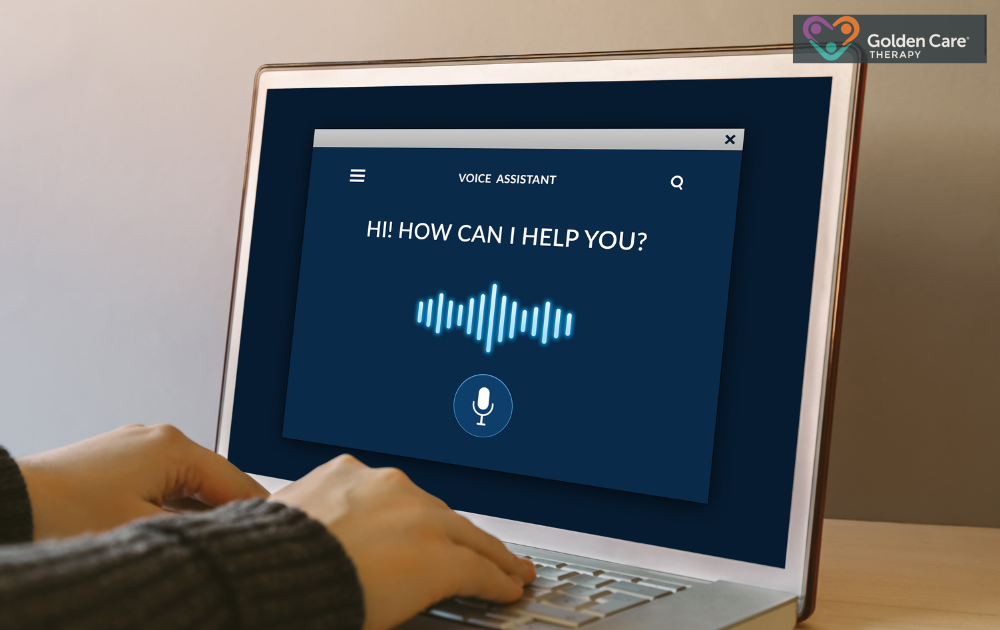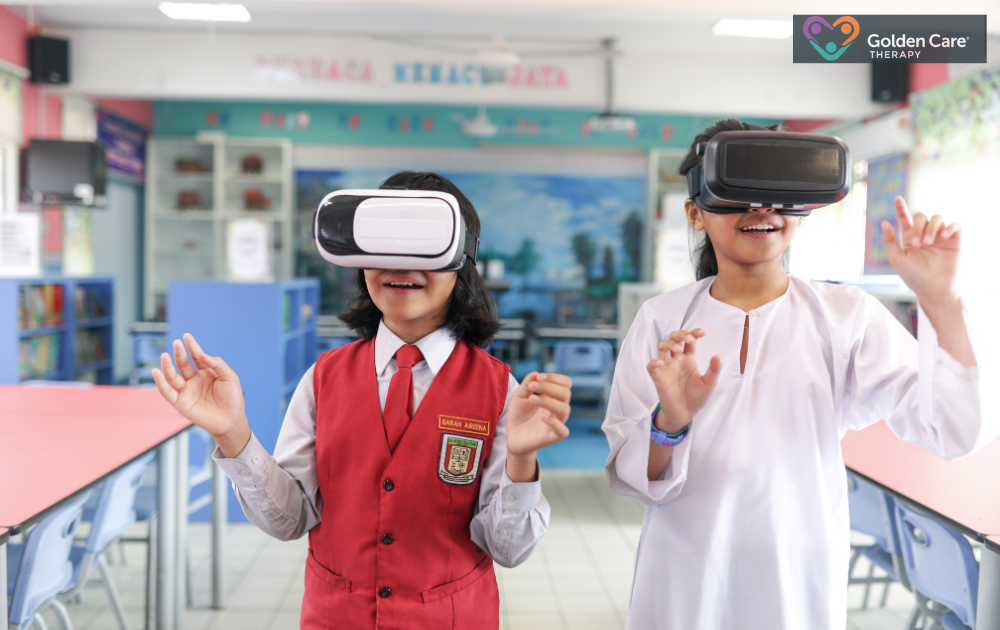Assistive technology plays a vital role in enhancing the lives of individuals with disabilities, including those with autism spectrum disorder (ASD).
According to the Technology-Related Assistance to Individuals with Disabilities Act of 1988, assistive technology is defined as ”any item, piece of equipment, or product system, whether acquired commercially off the shelf, modified, or customized, that is used to increase, maintain, or improve the functional capabilities of individuals with disabilities.”
In simpler terms, assistive technology refers to the tools and devices that are designed to assist individuals with disabilities in performing functions that might otherwise be difficult or impossible. These technologies range from mobility devices like walkers and wheelchairs to hardware, software, and peripherals that help people with disabilities access computers or other information technologies.
Different disabilities require different types of assistive technologies. For individuals with autism, assistive technology can help address challenges related to communication, social interaction, executive functioning, and more.
By providing necessary support and accommodations, assistive technology aims to empower individuals with disabilities and promote their independence and inclusion.

Why is Assistive Technology Important?
Assistive technology holds immense importance in the lives of individuals with disabilities, including those with ASD. It helps people with difficulties in speaking, typing, writing, remembering, pointing, seeing, hearing, learning, walking, and various other activities.
By bridging the gap between abilities and challenges, assistive technology enables individuals to participate more fully in their daily lives.
The significance of assistive technology extends beyond immediate functional benefits. It can positively impact the health and well-being of individuals with disabilities, enabling independent living and delaying or preventing the need for long-term care.
Moreover, assistive technology contributes to unexpected socioeconomic benefits by enhancing educational and employment opportunities for individuals with disabilities.
By providing individuals with the tools they need to overcome barriers and maximize their potential, assistive technology promotes inclusivity and empowers individuals with disabilities to lead fulfilling lives. It is an essential component of a comprehensive support system for individuals with ASD and other disabilities.

Examples of Assistive Technology
There are various types of assistive technology available, and each of them is designed to cater to specific challenges faced by individuals with ASD. In this section, we will explore three examples of assistive technology commonly utilized in the ASD community.
These are the following:
Augmented Communication Technology
Augmented communication technology encompasses a range of tools and devices that assist individuals with ASD in improving their communication skills. These technologies are particularly beneficial for individuals who have difficulty with expressive language or who are nonverbal.
One example of augmented communication technology is the use of speech-generating devices (SGDs). SGDs are electronic devices that allow individuals to select words, phrases, or sentences and have them produced audibly. These devices can be touchscreen-based or operated through switches, eye gaze, or head movement. SGDs provide a means for individuals with ASD to express themselves and engage in meaningful communication.
Another form of augmented communication technology is the use of visual supports, such as picture exchange communication systems (PECS) or communication boards.
These visual aids use images or symbols to represent objects, activities, or concepts, enabling individuals with ASD to communicate their needs, wants, and thoughts.

Social Interaction Technology
Social interaction can be a significant challenge for individuals with ASD. Social interaction technology aims to support individuals in developing social skills, understanding social cues, and engaging in meaningful social interactions.
Video modeling is one example of social interaction technology. It involves the use of videos to demonstrate appropriate social behaviors and interactions. Individuals with ASD can observe and learn from these models, helping them understand and navigate various social situations.
Social skills training software is another tool that utilizes technology to teach social skills. These software programs provide interactive lessons and simulations to help individuals with ASD practice and develop their social abilities in a safe and controlled environment.
Executive Dysfunction Technology
Executive dysfunction refers to challenges related to planning, organizing, and managing tasks. Individuals with ASD often experience difficulties in these areas.
Executive dysfunction technology aims to support individuals in overcoming these challenges and improving their executive functioning skills.
Task management apps and software are examples of executive dysfunction technology. These tools help individuals organize their schedules, set reminders, and manage their tasks effectively. They provide visual cues, prompts, and reminders to assist individuals in completing tasks and maintaining a structured routine.
Visual supports, such as visual schedules and visual timers, are also commonly used to address executive dysfunction. These tools provide individuals with a visual representation of their daily activities and the passage of time. Visual supports aid in planning, sequencing, and transitioning between tasks, promoting independence and reducing anxiety.

How to Implement Assistive Technology
There are various strategies and considerations to ensure the successful integration of assistive technology. In this case, two important aspects should be focused on which are the following:
Classroom Modifications
In addition to utilizing assistive technology, making certain modifications in the classroom can greatly support students with autism. These modifications create an inclusive and supportive environment that caters to their specific needs.
Here are some great examples:

By implementing these modifications, educators can create an environment that maximizes the benefits of assistive technology while addressing the unique needs of students with autism.
Collaborative Decision-Making
Choosing the right assistive technology for individuals with autism requires collaborative decision-making involving a team of professionals and consultants. These professionals are trained to match specific assistive technologies to individual needs.
The collaborative team may include family doctors, regular and special education teachers, speech-language pathologists, rehabilitation engineers, occupational therapists, and other specialists, including representatives from companies that manufacture assistive technology.
This collaborative approach ensures that the chosen assistive technology aligns with the individual’s requirements, abilities, and goals. By pooling their expertise, the team can tailor the assistive technology to address specific challenges and support the individual’s development and independence.
Collaborative decision-making also extends to ongoing support and evaluation of the assistive technology. This team-based approach allows for continuous monitoring, adjustment, and troubleshooting to ensure that the assistive technology remains effective and beneficial over time.

Common Misconceptions Regarding Assistive Technology
There are a bunch of misconceptions surrounding the use of assistive technology. As such, it’s important to dispel these misconceptions to further understand the true role and benefits of assistive technology in supporting individuals with disabilities.
Let’s take a closer look at some of them.
Myth: Assistive technology is “cheating” or a crutch
Assistive technology is not about cheating or taking shortcuts. It is a tool that helps individuals with disabilities overcome challenges and access equal opportunities. AT levels the playing field and empowers individuals to reach their full potential.
Myth: Assistive technology is only for individuals with severe disabilities.
Assistive technology is not limited to individuals with severe disabilities. It can benefit individuals with a wide range of abilities and disabilities. AT tools and supports are available for various needs, from physical disabilities to cognitive challenges. It is a flexible and customizable solution that caters to individual requirements.
Myth: Assistive technology will make individuals too reliant on it.
Assistive technology is designed to enhance independence and promote self-reliance. It provides support and accommodations to individuals, allowing them to participate fully in various activities. AT is not meant to replace skills or abilities but to supplement and enhance them.
Myth: Assistive technology hinders learning academic skills.
Education experts refute this myth. Assistive technology can actually facilitate learning and academic success for individuals with disabilities. It helps bridge the gap between their abilities and the demands of the curriculum. However, it is important to note that AT cannot replace good teaching or instruction, and it won’t “cure” learning differences like dyslexia or ADHD.
The Key Takeaway
By utilizing assistive technology services, individuals can receive the necessary support and guidance to make the most of assistive technology tools. These services work hand in hand with the tools to help individuals thrive in various environments, whether it’s in school, the workplace, or daily life.
It’s important to remember that finding the right assistive technology tools and learning how to use and manage them can be overwhelming. Due to this, it’s ideal to seek recommendations from professionals, explore cost-free options like free trials, and engage in open communication with schools or workplaces to help discover and use assistive technology effectively.
Research continues to shed light on the neurological basis of sensory issues in autism, offering hope for more targeted and effective therapies in the future. By recognizing and addressing sensory processing difficulties, we can improve the quality of life for individuals with autism and their families. If you’re seeking specialized ABA therapy in New Jersey, Indiana, Georgia, and New York, Golden Care offers comprehensive services tailored to meet the unique needs of each individual. Contact us to learn more or book a consultation today.
Sources:
https://www.atia.org/home/at-resources/what-is-at
https://www.washington.edu/accesscomputing/what-assistive-technology
https://www.understood.org/en/articles/assistive-technology
https://study.com/resources/assistive-technology-students-autism-spectrum.html



